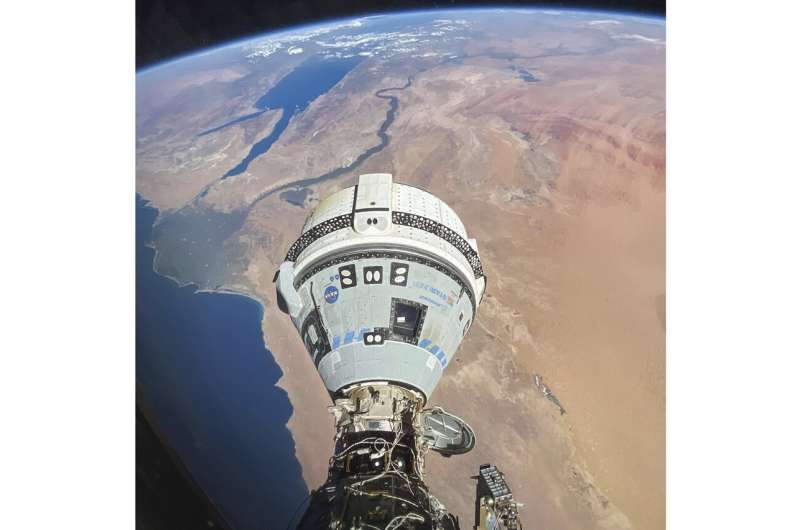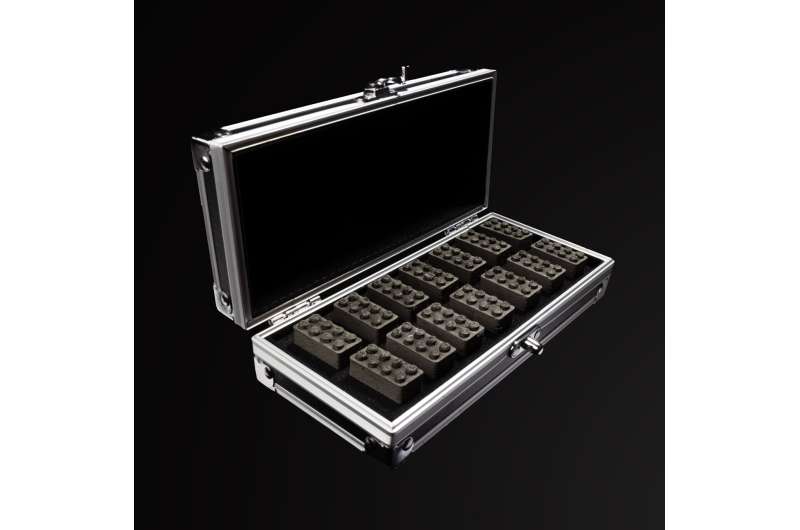Surprising phosphate discovery in Bennu asteroid sample
Thursday, 27 June 2024 03:35 Scientists have eagerly anticipated the analysis of the 4.3-ounce (121.6-gram) pristine asteroid Bennu sample collected by NASA's OSIRIS-REx (Origins, Spectral Interpretation, Resource Identification, and Security - Regolith Explorer) mission since it arrived on Earth last fall. Researchers hoped this material would reveal secrets of the solar system's past and the prebiotic chemistry that could
Scientists have eagerly anticipated the analysis of the 4.3-ounce (121.6-gram) pristine asteroid Bennu sample collected by NASA's OSIRIS-REx (Origins, Spectral Interpretation, Resource Identification, and Security - Regolith Explorer) mission since it arrived on Earth last fall. Researchers hoped this material would reveal secrets of the solar system's past and the prebiotic chemistry that could Shocked quartz reveals evidence of historical cosmic airburst
Thursday, 27 June 2024 03:35 Researchers continue to expand the case for the Younger Dryas Impact hypothesis. The idea proposes that a fragmented comet smashed into the Earth's atmosphere 12,800 years ago, causing a widespread climatic shift that, among other things, led to the abrupt reversal of the Earth's warming trend and into an anomalous near-glacial period called the Younger Dryas.
Now, UC Santa Barbara emeritu
Researchers continue to expand the case for the Younger Dryas Impact hypothesis. The idea proposes that a fragmented comet smashed into the Earth's atmosphere 12,800 years ago, causing a widespread climatic shift that, among other things, led to the abrupt reversal of the Earth's warming trend and into an anomalous near-glacial period called the Younger Dryas.
Now, UC Santa Barbara emeritu Bennu sample reveals solar system's original ingredients, possible watery history
Thursday, 27 June 2024 03:35 A detailed analysis of rocks and dust from the near-Earth asteroid Bennu, collected by NASA's University of Arizona-led OSIRIS-REx mission, has unveiled significant discoveries.
The OSIRIS-REx Sample Analysis Team found that Bennu contains the primary components that formed our solar system. The dust from Bennu is rich in carbon, nitrogen, and organic compounds, essential for life. The sam
A detailed analysis of rocks and dust from the near-Earth asteroid Bennu, collected by NASA's University of Arizona-led OSIRIS-REx mission, has unveiled significant discoveries.
The OSIRIS-REx Sample Analysis Team found that Bennu contains the primary components that formed our solar system. The dust from Bennu is rich in carbon, nitrogen, and organic compounds, essential for life. The sam 'Power rivalry in space': China lunar mission fuels US misinformation
Thursday, 27 June 2024 03:35 A historic lunar mission has demonstrated China's growing scientific prowess, but the feat has set off a torrent of misinformation targeting the United States that researchers say reflects their bitter competition in space.
China is celebrating the return of the Chang'e 6 probe to Earth on Tuesday bearing rock-and-soil samples from the little-known far side of the Moon, following a 53-day mi
A historic lunar mission has demonstrated China's growing scientific prowess, but the feat has set off a torrent of misinformation targeting the United States that researchers say reflects their bitter competition in space.
China is celebrating the return of the Chang'e 6 probe to Earth on Tuesday bearing rock-and-soil samples from the little-known far side of the Moon, following a 53-day mi Chang'e 6 mission returns with Moon samples from far side
Thursday, 27 June 2024 03:35 The reentry capsule of the Chang'e 6 mission was opened in Beijing on Wednesday afternoon, reported China Central Television.
The capsule was transported to Beijing earlier on Wednesday morning by airplane and subsequently taken to the China Academy of Space Technology, where it was designed and constructed.
During a brief ceremony at the academy on Wednesday afternoon, engineers ope
The reentry capsule of the Chang'e 6 mission was opened in Beijing on Wednesday afternoon, reported China Central Television.
The capsule was transported to Beijing earlier on Wednesday morning by airplane and subsequently taken to the China Academy of Space Technology, where it was designed and constructed.
During a brief ceremony at the academy on Wednesday afternoon, engineers ope Scientists Excited by Martian Air Samples in NASA's Mars Tubes
Thursday, 27 June 2024 03:35 Atmospheric scientists are eager to analyze the air enclosed with each rock and soil sample collected by NASA's Perseverance rover, viewing it as a treasure trove for atmospheric studies.
With each rock core sealed in its titanium sample tubes by NASA's Perseverance Mars rover, atmospheric scientists find themselves increasingly excited. These samples, which will be delivered to Earth as p
Atmospheric scientists are eager to analyze the air enclosed with each rock and soil sample collected by NASA's Perseverance rover, viewing it as a treasure trove for atmospheric studies.
With each rock core sealed in its titanium sample tubes by NASA's Perseverance Mars rover, atmospheric scientists find themselves increasingly excited. These samples, which will be delivered to Earth as p NASA awards SpaceX contract for space station deorbit vehicle
Wednesday, 26 June 2024 22:14

Why NASA astronauts are delayed at the space station after Boeing Starliner launch
Wednesday, 26 June 2024 18:10
When two veteran NASA astronauts blasted off on a test drive of Boeing's new capsule, they expected to head home from the International Space Station in a week or so.
It's now three weeks and counting for Butch Wilmore and Suni Williams as NASA and Boeing troubleshoot equipment problems that popped up on the way there.
Three potential landing dates were called off and their flight home is now on hold.
This week, Boeing said the Starliner capsule's problems aren't a concern for the return trip and "the astronauts are not stranded.
China’s ‘worst-case thinking’ could spark space crisis, study finds
Wednesday, 26 June 2024 16:09

Urban Sky wins NASA award to develop balloon-borne fire sensors
Wednesday, 26 June 2024 14:54

The space bricks have landed
Wednesday, 26 June 2024 14:16
ESA scientists have been exploring how a future moon base might be built from materials on the lunar surface. Inspired by LEGO building, they have used dust from a meteorite to 3D-print "space bricks" to test the idea. ESA's space bricks are on display in selected LEGO Stores from 20 June to 20 September, helping to inspire the next generation of space engineers.
The idea seems simple. Rather than take building materials all the way to the moon, we could use what is already there to construct a moon base. The surface of the moon is covered with a layer of rock and mineral fragments known as lunar regolith.
Starfish Space to extend Intelsat satellite life in first commercial mission
Wednesday, 26 June 2024 14:10

Wyvern to use Loft Orbital satellites for hyperspectral observations
Wednesday, 26 June 2024 14:04






